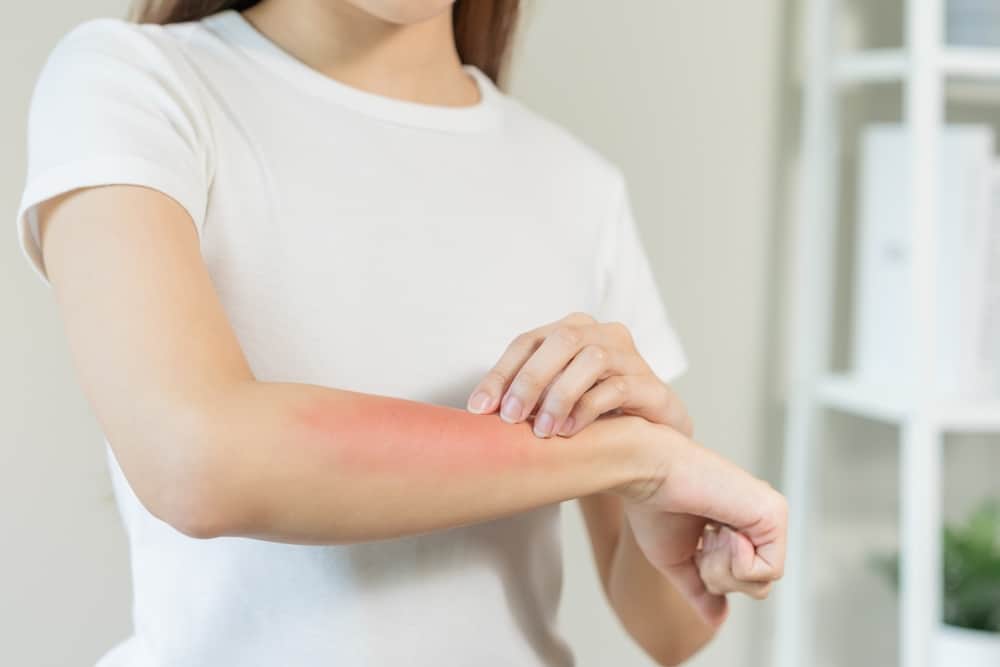No see ums, also known as biting midges or sand flies, are tiny blood-sucking insects that can become a major nuisance during the warmer months. While they got their nickname due to being barely visible to the naked eye, their bites pack a powerful punch resulting in large, red, itchy welts on the skin. Getting rid of no see ums is crucial for enjoying the outdoors without being pestered, and for preventing painful bites that can potentially lead to infection.
In this comprehensive guide, we will provide the most effective methods for eliminating no see ums from your property and preventing future infestations.
Identifying No See Ums and Their Breeding Grounds
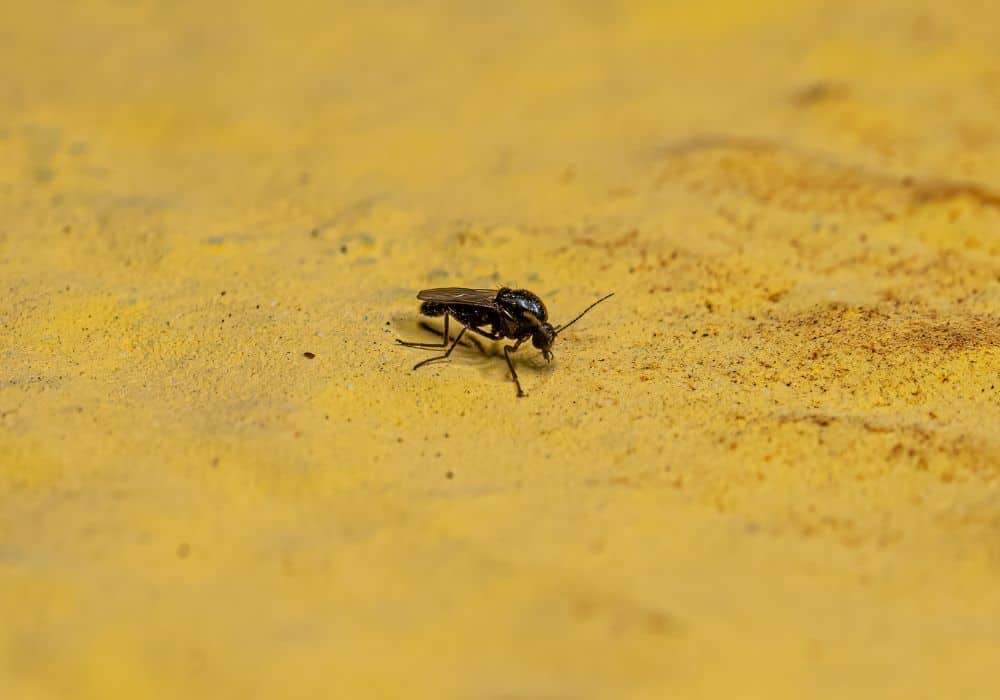
Before implementing control measures, it’s important to learn how to identify no see ums as well as their preferred breeding grounds.
Physical Characteristics
No see ums are tiny flies measuring 1-3 mm in length. They have short antennae and wings that are usually folded over their backs when at rest. Their bodies and wings are covered in fine hairs. They can vary in color from blackish to grayish. Some key identifying features include:
- Minute size – adults range from 1 to 3 mm, making them barely visible
- Short, stubby antennae – their antennae are much reduced compared to larger flies
- Folded wings – wings lay flat over abdomen when at rest rather than sticking out
- Dusty, hairy appearance – close inspection reveals fine hairs covering their body and wings
- Hunched posture – they have a characteristic hunched stance compared to mosquitoes that perch horizontally
- Biting mouthparts – females have sharp, needle-like mouthparts adapted for piercing skin
Being able to recognize no see ums based on these subtle hallmarks allows you to distinguish them from other small insects you may encounter.
Behavioral Patterns
No see ums are most active near dusk and dawn when seeking a blood meal. They detect carbon dioxide and warmth emitted from humans and animals, which is how they zero in on hosts. The females are the only ones that bite, as they require blood to develop their eggs.
Some key facts about their behavior patterns:
- Crepuscular activity – peak feeding times are during the twilight periods around dawn and dusk
- Attracted to CO2 – exhaled carbon dioxide helps them locate potential hosts
- Heat sensors – they are drawn to body heat and infrared radiation from warm-blooded animals
- Persistent biters – they will continue trying to bite if unsuccessful, unlike mosquitoes
- Hovering flight – they characteristically hover in one spot while biting, unlike mosquitoes that land directly
- Poor fliers – fans and wind can disrupt their short, hopping flight pattern
Recognizing these behavioral quirks, such as their tiny size but aggressive biting persistence, is key to identifying a no see um problem.
Breeding Grounds
No see ums thrive in moist, marshy areas and lay their eggs in mud, moist soil, underbrush, tidal pools, tree holes, and similar environments. Typical breeding grounds include:
- Salt marshes – shallow coastal wetlands flooded and drained by salt water tides
- Mangrove swamps – tropical and subtropical swamps dominated by salt-tolerant mangrove trees
- Lake and pond edges – marshy shorelines and wetlands surrounding lakes and ponds
- River banks – muddy flooded areas along rivers and streams.
- Wetlands – transitional zones between water and land with saturated soils
- Tree holes – small cavities and holes that collect rainwater and debris
- Leaf litter – soggy decomposing leaves, sticks, and organic matter
- Marsh grasses – stands of moist grass plants bordering water sources
Areas with saltwater intrusion or brackish water are especially attractive to no see ums for breeding purposes. The larvae thrive in the wet, nutrient-rich environments.
Knowing the preferred breeding environments of no see ums allows you to locate and remove potential sources on your property. Pay particular attention to moist marshy areas, tidal pools, edges of water bodies, accumulation of wet organic matter, and vegetation that retains moisture and humidity. These provide perfect conditions for larvae to flourish.
Physical Control Methods
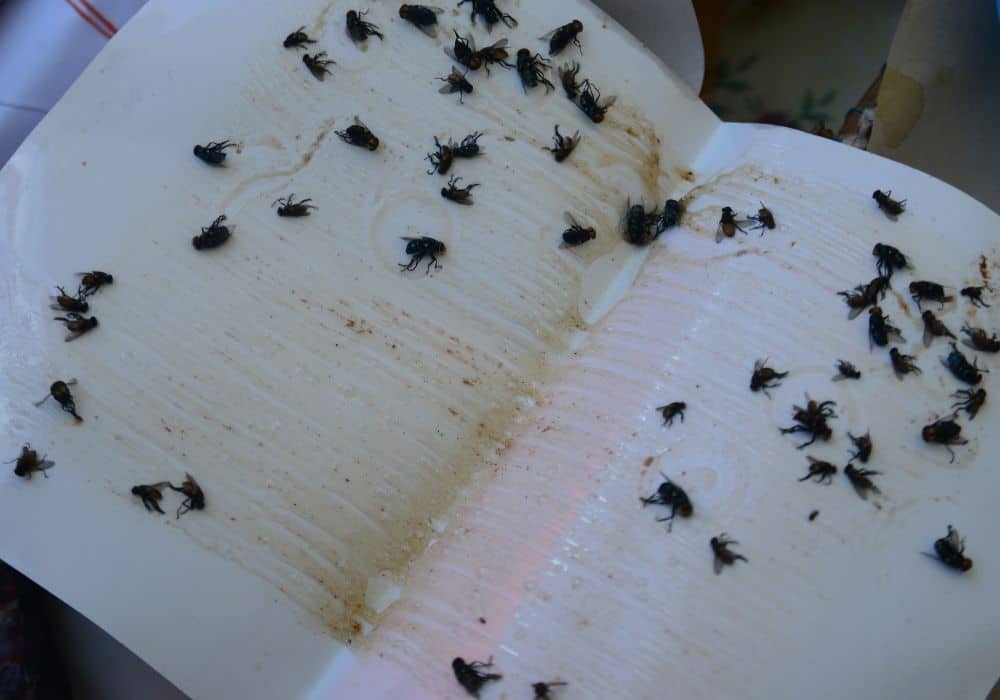
There are several physical and mechanical ways to get rid of existing no see ums, while preventing future infestations through habitat modification.
Removing Breeding Sites
Eliminating any standing water or moist areas where no see ums can lay their eggs is key. Here are some effective actions to take:
- Drain or fill in salt marshes, swamps, and wetlands. Permanently remove these soggy environments that are prime breeding grounds.
- Empty or drain bird baths, potted plant trays, discarded tires, tin cans, buckets, and any water-collecting containers. Remove them entirely or dump out water at least once per week.
- Prune and trim trees and bushes to allow sunlight to penetrate enclosed areas. No see ums prefer shady, humid conditions. Increased sunlight and airflow will dry out their habitats.
- Clean rain gutters and downspouts to improve drainage and prevent water accumulation. Use gutter guards to keep out debris that impedes proper drainage.
- Fill in any low spots and puddles around your property that collect water from rain or irrigation. Eliminate depressions where water can pool.
- Maintain proper grades and contours when landscaping to eliminate depressions where moisture can pool. Re-grade areas to promote runoff and prevent standing water.
- Aerate lawn and garden areas regularly with a core aerator to prevent soggy soil. Aerating improves drainage and dries out breeding sites.
- Remove weedy overgrown vegetation near water sources. Prune back marsh grasses, weed beds, and dense brush that harbor moisture.
By eliminating wet conditions and improving drainage, you remove ideal no see um breeding environments. Stop them from developing by removing stagnant water accumulation.
Installing Physical Barriers
Barriers can prevent no see ums from reaching you:
- Screens – Ensure windows and doors have tight-fitting screens to keep midges out of your home. Use a minimum 16 mesh screens. Seal any tears or gaps with caulk.
- Fans – Portable fans or ceiling fans can deter no see ums due to them having poor flight control. The air currents disrupt their ability to land and bite.
- Netting – Sleep under bed nets or mosquito netting for protection outdoors or on porches. Tuck the netting under mattresses to seal the edges.
- Clothing – Wear long sleeves, pants, socks and closed toe shoes when outside during peak activity periods around dawn and dusk. Minimize exposed skin.
- Proofing – Seal any cracks, crevices, or openings leading into structures using caulk and weatherstripping. This denies entry points for no see ums.
Barriers create a physical line of defense preventing access to you both indoors and outdoors. Proper screening and protective clothing limits opportunities for biting.
Trapping No See Ums
Traps can help capture and kill adult no see ums:
- CO2 traps – Dry ice gives off carbon dioxide which lures no see ums into the trap. Add a small piece inside a ventilated container like a cooler or tube trap.
- Fan traps – Box fan traps blow no see ums into a receptacle filled with soapy water or bug zapping grids. Place them near entryways.
- Sticky traps – Yellow sticky boards attract and adhere no see ums when they land on the boards. Use multiple traps around breeding areas.
- Black light traps – Black light bulbs attract no see ums to an electrocuting grid or adhesive board. Position them away from patios or porches.
Monitor traps regularly to dispose of captured midges so they don’t escape back into your property. Trapping helps reduce populations while identifying problem zones.
Chemical Treatment Methods
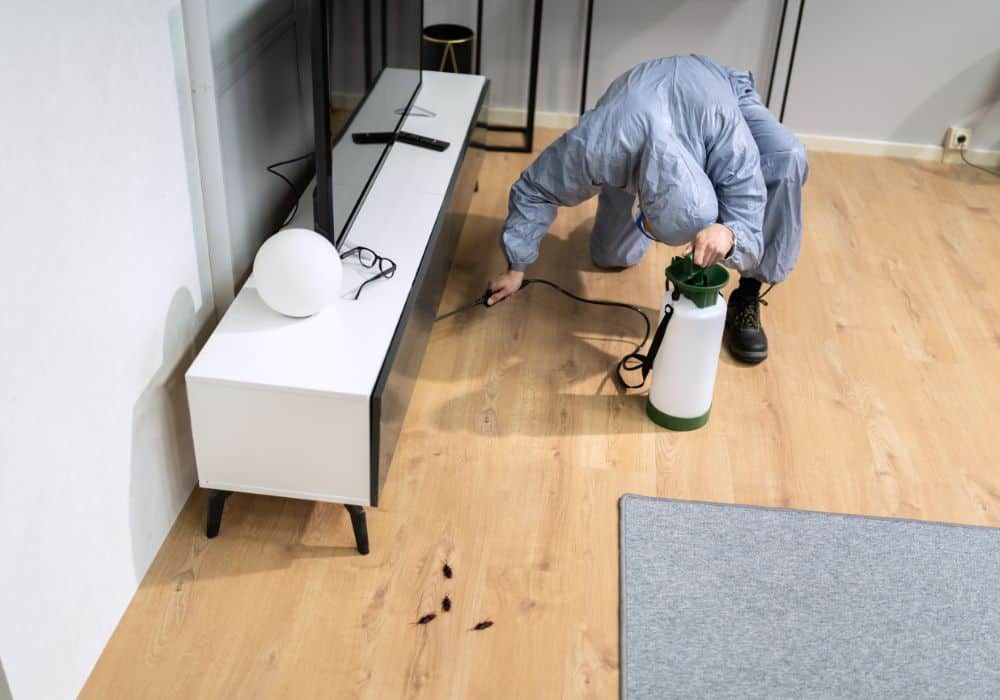
When physical control methods alone are not effective enough, certain chemical solutions can help reduce no see um populations. Always read and follow label directions when using pesticides.
Residual Sprays
Applying residual insecticides around the perimeter of your property and potential entry points creates a barrier. No see ums land on treated areas and ingest the pesticide, resulting in death.
Some common active ingredients in residual sprays include:
- Permethrin – synthetic pyrethroid that disrupts nerve impulses
- Bifenthrin – pyrethroid insecticide that attacks the nervous system
- Cypermethrin – fast acting pyrethroid that induces paralysis
- Deltamethrin – pyrethroid that attacks the central nervous system
Reapply these sprays every 3-4 weeks according to the label instructions for continued protection. Focus on building foundations, lower vegetation, and surfaces around likely entry points. Residual sprays kill no see ums on contact.
Larvicides
Larvicides target and kill no see um larvae in their breeding sites before they can mature into flying, biting adults. Here are two effective options:
- Bti (Bacillus thuringiensis israelensis) – This biological larvicide can be applied to water sources or wet areas where larvae are present. Upon ingestion, it disrupts their digestive system.
- Methoprene – This compound mimics hormones that prevent no see um larvae from properly developing into adults. Use methoprene-based products to treat potential breeding sites.
Apply larvicides directly to standing water, marshy areas, tidal pools, and other known or suspected sources of larvae. This prevents them from reaching adulthood.
Foggers/Misters
Foggers and misters dispense insecticides as a fine mist to kill adult midges on contact. They provide quick knockdown and work well right before an evening event when no see ums come out.
Effective fogger options contain:
- Permethrin – disables the central nervous system
- Cypermethrin – fast-acting to induce paralysis
- Tetramethrin – disrupts nerve impulses by interfering with sodium channels
- Piperonyl butoxide (PBO) – enhances the effectiveness of pyrethroids
Limit use to small outdoor areas and avoid breathing the mist. Reapply as needed based on label directions. Direct application on flying adults provides rapid results.
Home Remedies and Natural Options

Some DIY and natural options can supplement other control methods to deter no see ums:
- Place citronella candles outside to repel midges with the strong scent. Position them near gathering areas.
- Apply eucalyptus oil to skin as a repellent when going outside. The pungent aroma masks human odors that attract biters.
- Use a commercial insect repellent containing DEET, picaridin, or oil of lemon eucalyptus on exposed skin. Reapply every few hours for ongoing protection.
- Install bat houses to attract insect-eating bats who will prey on adult midges. Locate them at least 20 feet from patios and doorways.
- Release batches of dragonflies from local sources like garden supply stores. Dragonfly larvae eat mosquito larvae while adults consume adult midges.
- Apply food-grade diatomaceous earth powder to potential breeding sites. The microscopic sharp edges cut and desiccate no see um larvae upon contact.
- Introduce Gambusia or mosquito fish to ponds or water gardens to feed on larvae. Ensure the fish can’t escape to other local water bodies.
Natural controls help limit the midge problem without the need for pesticides. Use them to supplement other methods for a comprehensive strategy.
Preventing No See Ums Year-Round
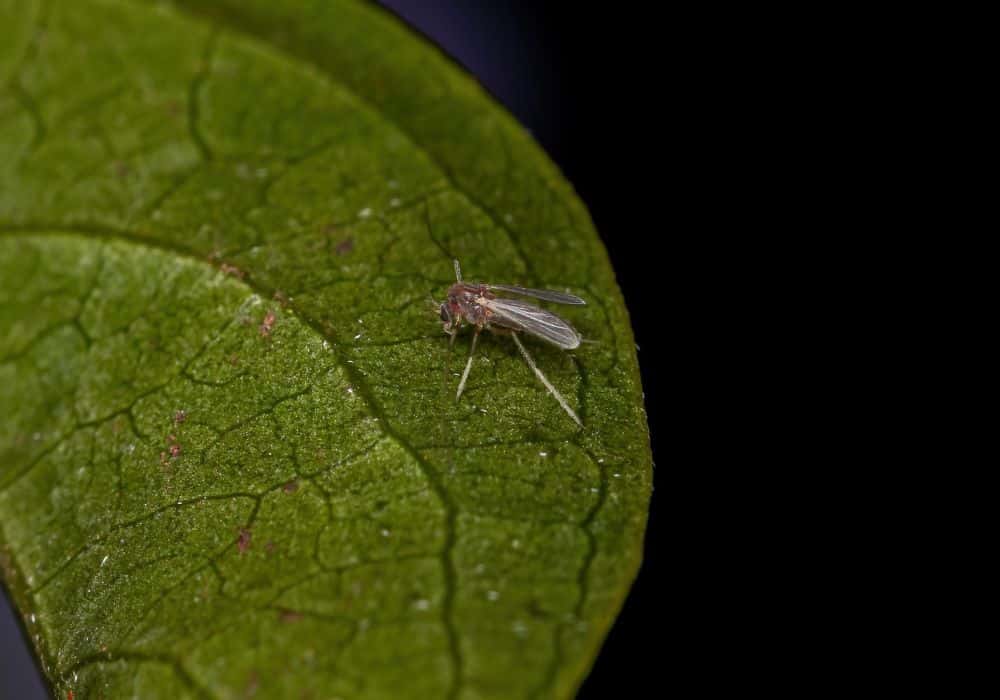
Getting rid of existing no see ums is only half the battle. Implementing preventive measures is key for keeping populations and bites to a minimum during seasons when they are problematic.
Cultural Practices
- Eliminate breeding sites early in the year before populations have a chance to develop. Be proactive.
- Keep lawn areas mowed and free of weeds or wet vegetation. No see ums breed in moist overgrowth.
- Fill in tree holes and stumps that can collect water. Eliminate natural containers.
- Clean gutters and drainage areas frequently. Don’t allow clogs or debris accumulation.
- Aerate and improve lawn drainage with core aeration devices. Prevent soggy soil.
- Introduce fish, dragonflies and other biological controls early in the season. Let them establish.
- Remove leaf litter and wet organic debris. Don’t give larvae places to hide.
By actively modifying the habitat and environment through culture practices, you can make conditions less favorable for breeding.
Reducing Exposure
When no see ums are actively biting:
- Wear light-colored clothing, which is less attractive. Dark colors seem to draw more interest.
- Apply repellent containing DEET, picaridin, or other approved ingredients to exposed skin. Use higher percentages for severe infestations.
- Stay indoors during peak activity periods at dawn and dusk when possible. Avoid prime feeding times.
- Keep porch lights off to avoid attracting no see ums. Use yellow bulbs if lighting is necessary.
- Close windows and doors before sunset or use tight-fitting screens. Don’t let them sneak inside.
- Use fans, mosquito netting or other barriers when relaxing outside. Create a physical blockade.
Staying inside and covering up limits bites, while repellents mask human odors and flavors they home in on.
Monitoring
- Inspect your entire property weekly during spring and summer for potential breeding sites. Be diligent.
- Install and regularly check CO2 traps for surveillance on emerging adult populations. Gauge seasonal changes.
- Keep records of problem areas and times of year to focus control efforts before infestations take hold. Review annually.
Through vigilant monitoring and preventive maintenance, you can stay one step ahead of no see ums and enjoy your property bite-free. Don’t wait until they are swarming to take action.
Frequently Asked Questions About Eliminating No See Ums
1. What time of day are no see ums most active?
No see ums generally seek blood meals around dawn and dusk, though they may bite throughout the day if heavily infested. Peak activity occurs during the crepuscular periods right before sunset and shortly after sunrise when temperatures are coolest. They detect carbon dioxide and heat signatures best at cooler temps.
2. How far can no see ums travel from their breeding site?
Most no see ums remain within about 1-2 miles of where they hatch, though some species can travel up to 20 miles. Even small wet areas can produce enough midges to annoy nearby homes and properties within a several mile radius. Their limited flight range means addressing local breeding sites can provide relief.
3. How long do no see ums live?
The complete life cycle ranges from 2 weeks to 2 months depending on temperature and species. Adult biting midges typically live for 2-3 weeks maximum in the field conditions. Treating breeding sites breaks their life cycle by preventing larvae from developing into adults.
4. Can no see ums get through window screens?
No see ums can pass through torn screens or inadequately mesh screens. Ensure windows have tight-fitting 16 or 20 mesh screens to effectively exclude midges seeking entry. Seal edges with caulk and repair any rips or holes that compromise the barrier. Their small size enables them to pass through slight gaps.
5. What diseases can no see ums transmit?
No see ums can theoretically vector certain diseases such as fowl pox, Tularemia, and filariasis. However, unlike mosquitoes, they are not considered major disease carriers in the United States. Their bites mainly cause irritation, discomfort, and allergic reactions in humans. Still, take steps to avoid bites as they can become infected and progress to cellulitis.
Conclusion
This comprehensive guide covers the key facts about no see ums, including their breeding grounds, behaviors, and when they are most active. We provided details on both physical and chemical control methods to eliminate existing infestations, ranging from habitat modification and barriers to residual sprays and larvicides. Preventive cultural practices, techniques to minimize exposure, and monitoring strategies will help deter future seasonal invasions before they take hold. While no see ums can be frustrating, the solution ultimately lies in integrated pest management and diligent prevention. With the proper knowledge and techniques, you can successfully rid your property of these biting pests and enjoy the warmer months free of annoyance. Consistency is key, as is addressing breeding areas early before populations explode. No see ums can be controlled with a bit of strategy and perseverance.
